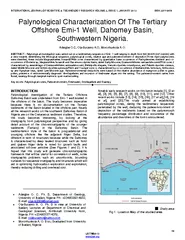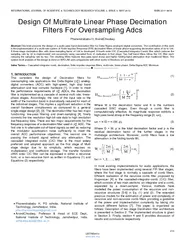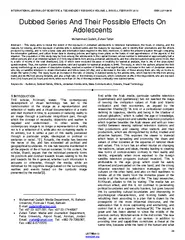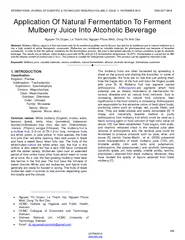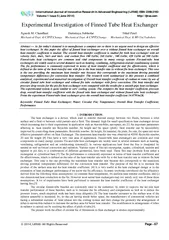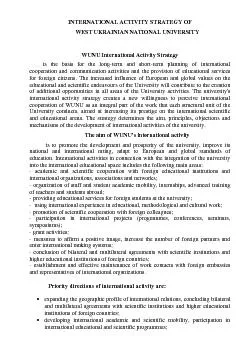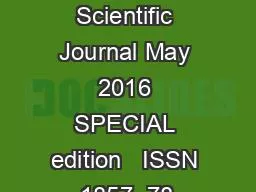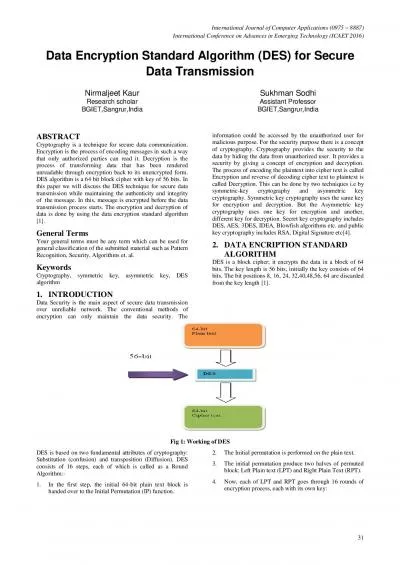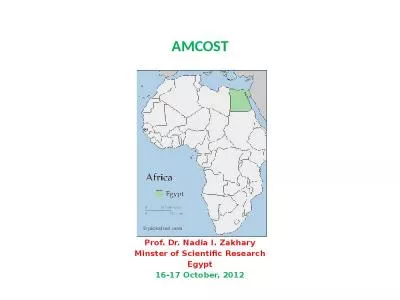PDF-INTERNATIONAL JOURNAL OF SCIENTIFIC TECHNOLOGY RESEAR
Author : luanne-stotts | Published Date : 2015-05-24
ijstrorg Palynological Characterization Of The Tertiary Offshore Emi 1 Well Dahomey Basin Southwestern Nigeria Adeigbe O Ola Buraimo A O Moronhunkola A ABSTRACT
Presentation Embed Code
Download Presentation
Download Presentation The PPT/PDF document "INTERNATIONAL JOURNAL OF SCIENTIFIC TEC..." is the property of its rightful owner. Permission is granted to download and print the materials on this website for personal, non-commercial use only, and to display it on your personal computer provided you do not modify the materials and that you retain all copyright notices contained in the materials. By downloading content from our website, you accept the terms of this agreement.
INTERNATIONAL JOURNAL OF SCIENTIFIC TECHNOLOGY RESEAR: Transcript
ijstrorg Palynological Characterization Of The Tertiary Offshore Emi 1 Well Dahomey Basin Southwestern Nigeria Adeigbe O Ola Buraimo A O Moronhunkola A ABSTRACT Palynological investigation was carried out on a sedimentary sequence of Emi 1 well rang. ijstrorg Agri Charcoal As A Fuel For Power Generation An Initiative Navdeep Singh Harshdeep Singh Sewa Singh AbstractObjective The prevention climatic changes induced by anthropological greenhouse gas emissions is one of the of severe major challe ijstrorg Biodegradation Of Lignin From Corn Cob By Using A Mixture Of Phanerochaete Chrysosporium Lentinus Edodes And Pleurotus Ostreatus Mahyati Abdul Rauf Patong Muh Nasir Djide Dan Paulina Taba Abstract Corn cob is agricultural waste containing ijstror g Design Of Multirate Linear Phase Decimation Filters For Oversampling Adcs Phanendra abu H ArvindChoubey Abstract This brief presents the design of a audio pass band decimation filter for Delta Sigma analog to digital converters The contribu ijstrorg Dubbed Series And Their Possible Effects On Adolescents Muhammad Qudah Zuhair Tahat Abstract This study aims to reveal the extent of the exposure of Jordanian adolescents to television transmission the hours of viewin g and the reasons for v ijstrorg Application Of Natural Fermentation To Ferment Mulberry Juice Into Alcoholic Beverage Nguyen Thi Duyen Le Thanh Hai Nguyen Phuoc Min Dong Thi Anh Da Abstract Mu lberry Morus nigra is a fruit not known only for its nutritional qualities and com 2014 IJIRAE All Rights Reserved Page 67 Jignesh M Chaudhari Mechanical Dept CSPITChanga Dattatraya Subhedar Mechanical Dept CSPITChanga Nikul Patel Mechanical Dept MS UniVadodara xperimental nvestigation of inned ube eat xchanger Ab http://www.bipublication.com ADVANTAGES AND DISADVANTAGES OF PRIVATISATION IN INDIA Anant Kousadikar and – An Approach for Better Reading. Rev. 02/10/2014. . Modified by Dr. Gail P. Taylor. Originally developed by Beth Fischer and Michael Zigmond, Survival Skills and Ethics Program www.pitt.edu/~survival. WEST UKRAINIAN NATIONAL UNIVERSITY WUNU International Activity Strategy is the basis for the long - term and short - term planning of international cooperation and communication activities and the p CEA-LETI20182CEA-LETISCIENTIFIC REPORT20183Within CEA Tech and Leti silicon technologies and components research activities are shared between two divisions gathering together around 600 researchersTh 240 Abulcasis Al-Zahrawi The Surgeon Of Al-Andalus ProfDrLuisa Maria Arvide Cambra Department of Philology University of Almeria Spain Abstract Among the many scientists who enriched the scientific (0975 – 8887) International Conference on Advances in Emerging Technology (ICAET 2016) 31 Data Encryption Standard Algorithm (D ES ) f or Secure Data Transmission Nirmaljeet K aur Research schol European Journal of Lipid Science and Technology. The. . European Journal of Lipid Science and Technology . is a peer-reviewed journal publishing original research articles, reviews, and other contributions on lipid related topics in food science and technology and biomedical science. A major focus of the journal is the synthesis . Minster of Scientific Research. Egypt. 16-17 October, 2012. AMCOST. The African region had historical achievements in science and technology, though for a long period, the region neglected this important field. .
Download Document
Here is the link to download the presentation.
"INTERNATIONAL JOURNAL OF SCIENTIFIC TECHNOLOGY RESEAR"The content belongs to its owner. You may download and print it for personal use, without modification, and keep all copyright notices. By downloading, you agree to these terms.
Related Documents

